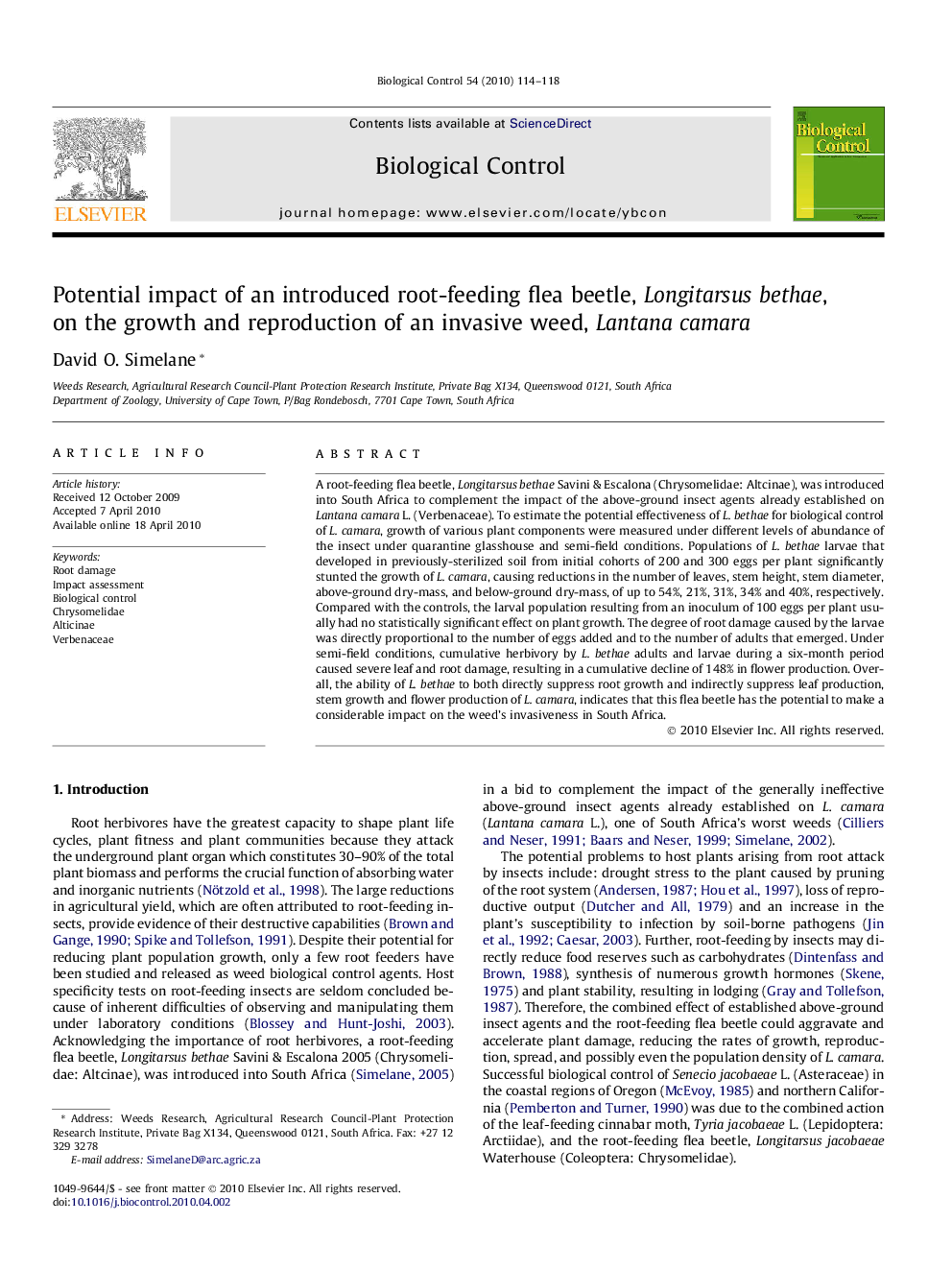| Article ID | Journal | Published Year | Pages | File Type |
|---|---|---|---|---|
| 4504350 | Biological Control | 2010 | 5 Pages |
Abstract
A root-feeding flea beetle, Longitarsus bethae Savini & Escalona (Chrysomelidae: Altcinae), was introduced into South Africa to complement the impact of the above-ground insect agents already established on Lantana camara L. (Verbenaceae). To estimate the potential effectiveness of L. bethae for biological control of L. camara, growth of various plant components were measured under different levels of abundance of the insect under quarantine glasshouse and semi-field conditions. Populations of L. bethae larvae that developed in previously-sterilized soil from initial cohorts of 200 and 300 eggs per plant significantly stunted the growth of L. camara, causing reductions in the number of leaves, stem height, stem diameter, above-ground dry-mass, and below-ground dry-mass, of up to 54%, 21%, 31%, 34% and 40%, respectively. Compared with the controls, the larval population resulting from an inoculum of 100 eggs per plant usually had no statistically significant effect on plant growth. The degree of root damage caused by the larvae was directly proportional to the number of eggs added and to the number of adults that emerged. Under semi-field conditions, cumulative herbivory by L. bethae adults and larvae during a six-month period caused severe leaf and root damage, resulting in a cumulative decline of 148% in flower production. Overall, the ability of L. bethae to both directly suppress root growth and indirectly suppress leaf production, stem growth and flower production of L. camara, indicates that this flea beetle has the potential to make a considerable impact on the weed's invasiveness in South Africa.
Related Topics
Life Sciences
Agricultural and Biological Sciences
Agronomy and Crop Science
Authors
David O. Simelane,
